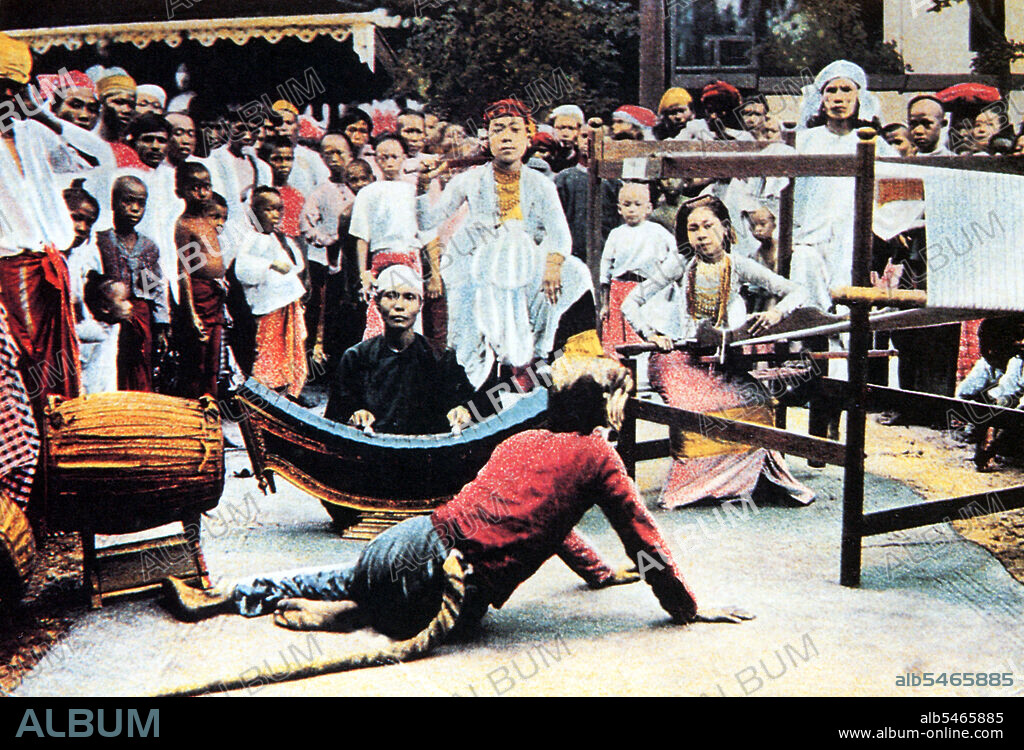alb5465885
An ah-nyeint troupe performance c. 1900. A spirit (centre) sends a tiger (foreground) to carry off the heroine who sits weaving.

|
Zu einem anderen Lightbox hinzufügen |
|
Zu einem anderen Lightbox hinzufügen |



Haben Sie bereits ein Konto? Anmelden
Sie haben kein Konto? Registrieren
Dieses Bild kaufen

Titel:
An ah-nyeint troupe performance c. 1900. A spirit (centre) sends a tiger (foreground) to carry off the heroine who sits weaving.
Untertitel:
Siehe automatische Übersetzung
Dance in Burma can be divided into dramatic, folk and village, and nat dances, each having distinct characteristics. Although Burmese dance has been influenced by the dance traditions of its neighbours, in particular Thailand, it retains unique qualities that distinguish it from other regional styles, including angular, fast-paced and energetic movements and emphasis on pose, not movement. Various types of Burmese music use an array of traditional musical instruments, assembled in an orchestra known as hsaing waing which the Burmese saing saya Kyaw Kyaw Naing has made more widely known in the West. Traditional folk music is atypical in Southeast Asian music, as it is characterized by sudden shifts in rhythm and melody as well as change in texture and timbre. Classical traditions of Burmese music are found in the Mahagita, an extensive collection of classical songs and are typically divided into indoor and outdoor ensembles. These songs tend to be about various legends in Pali and subsequently in Burmese intermingled with Pali, related to religion or the power and glory of monarchs, and then the natural beauty of the land, forests and the seasons, eventually feminine beauty, love, passion and longing, in addition to folk music sung in the paddy fields.
Bildnachweis:
Album / Pictures From History/Universal Images Group
Freigaben (Releases):
Model: Nein - Eigentum: Nein
Rechtefragen?
Rechtefragen?
Bildgröße:
5100 x 3472 px | 50.7 MB
Druckgröße:
43.2 x 29.4 cm | 17.0 x 11.6 in (300 dpi)
Schlüsselwörter:
ASIEN • ASIEN, KONTINENT • FRAU • FRAUEN • GESCHICHTE • KONTINENT, ASIEN • LIED • MUSIK • MUSIK: LIED • MUSIKINSTRUMENTE • TANZ • TANZEN • UNTERHALTUNG (ENTERTAINMENT) • UNTERHALTUNG • WEIBCHEN • WOMAN • ZEITGESCHICHTE • ZEITVERTREIB
 Pinterest
Pinterest Twitter
Twitter Facebook
Facebook Link kopieren
Link kopieren Email
Email
